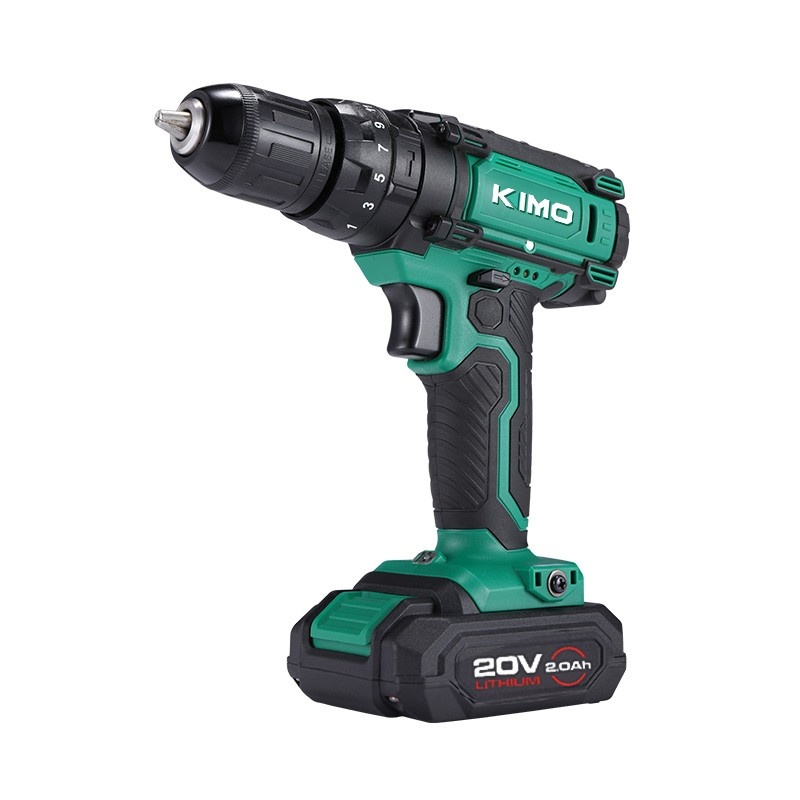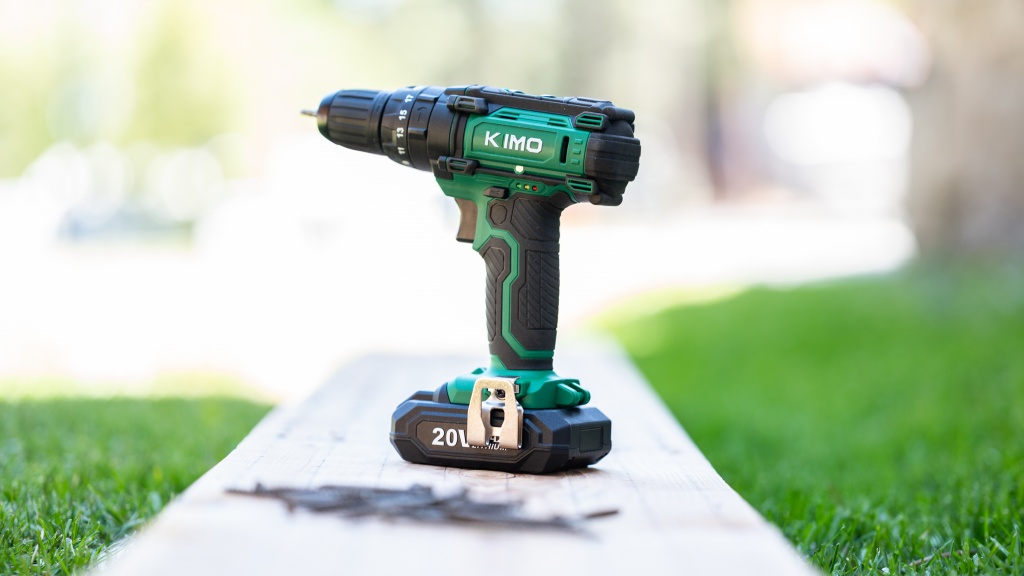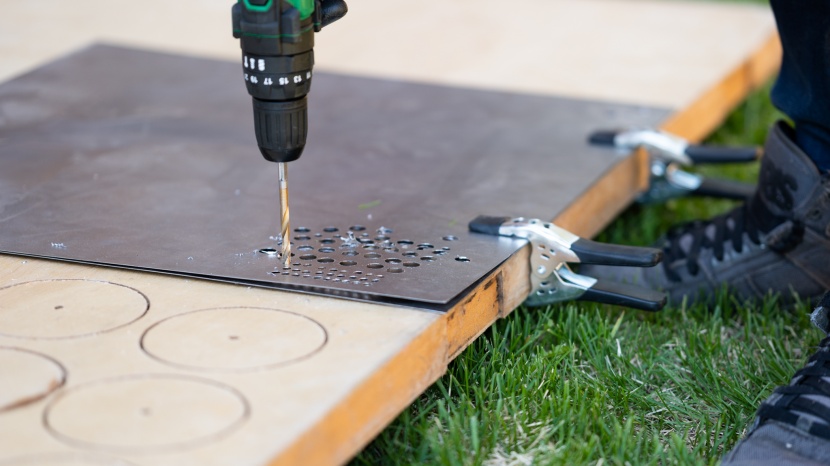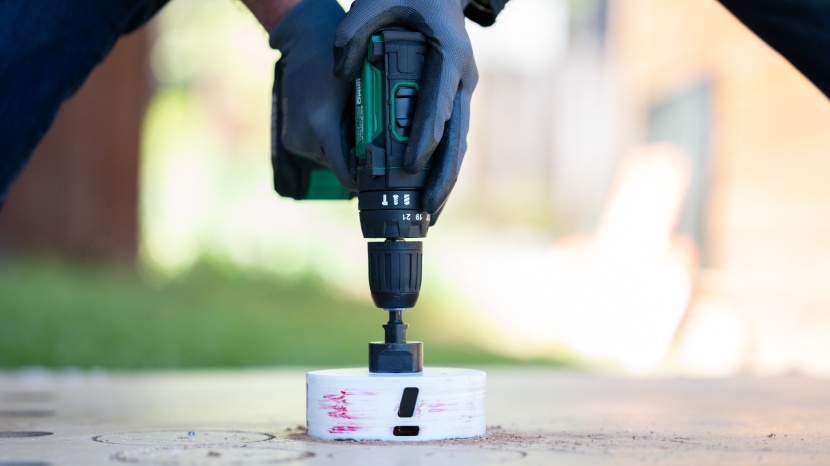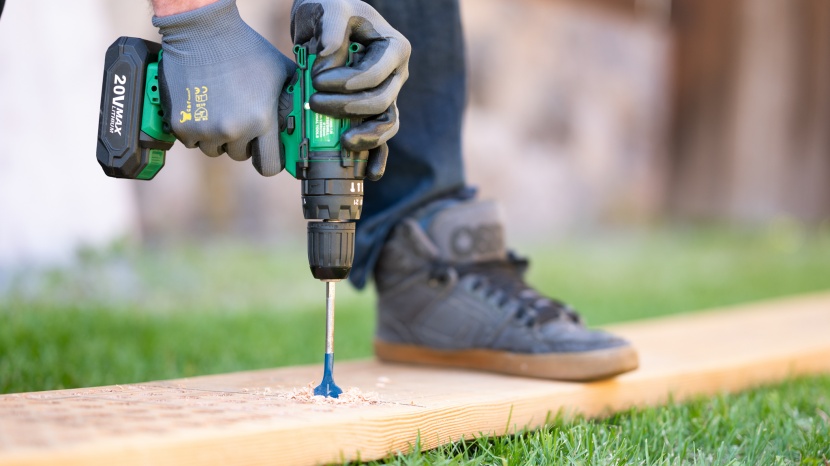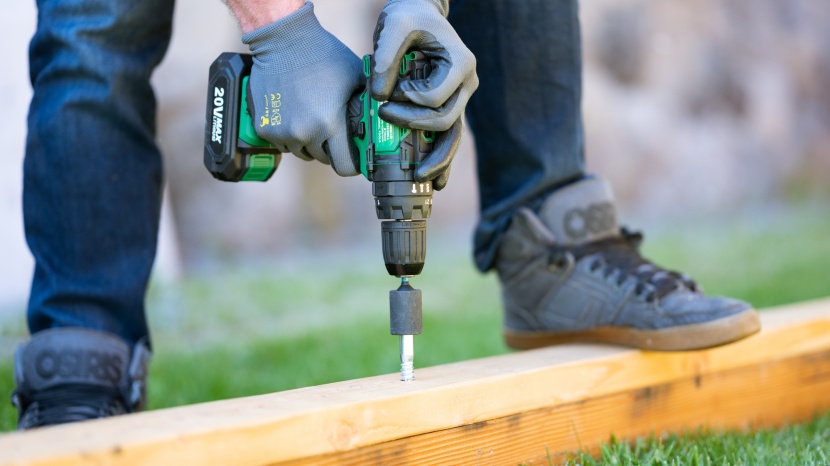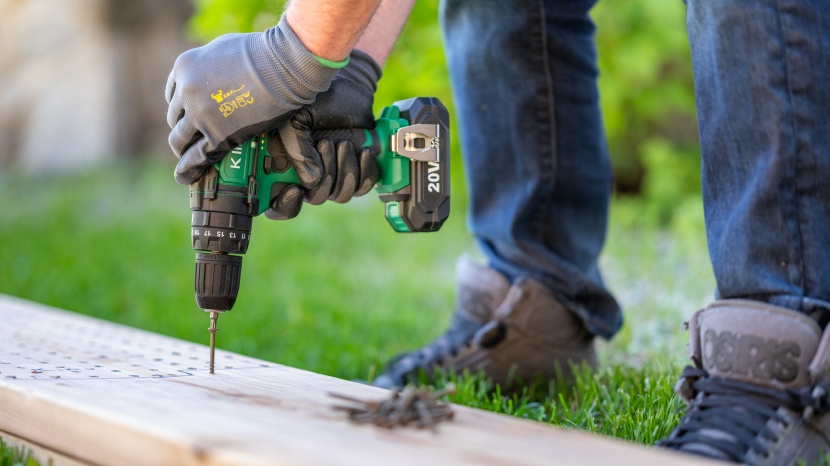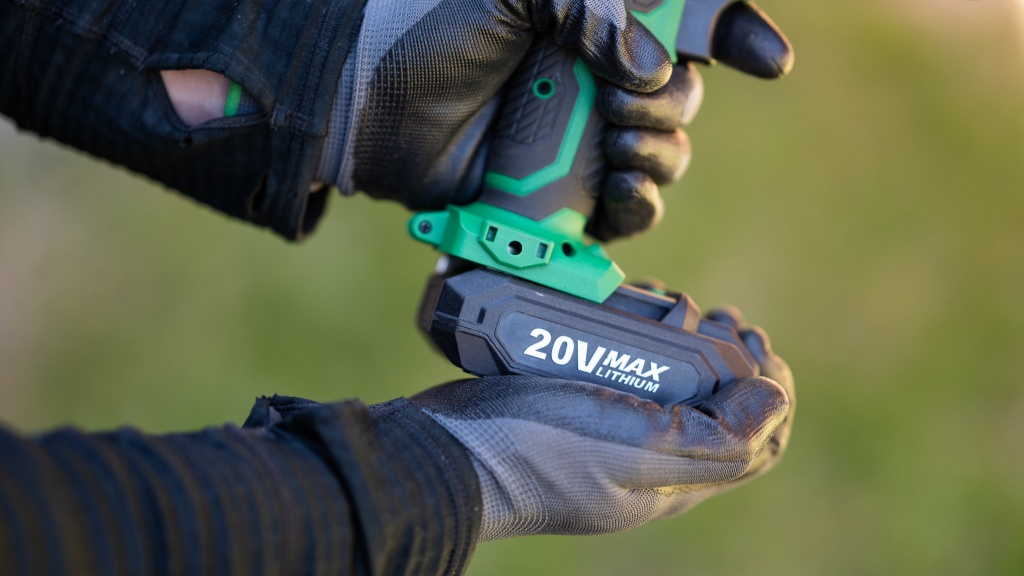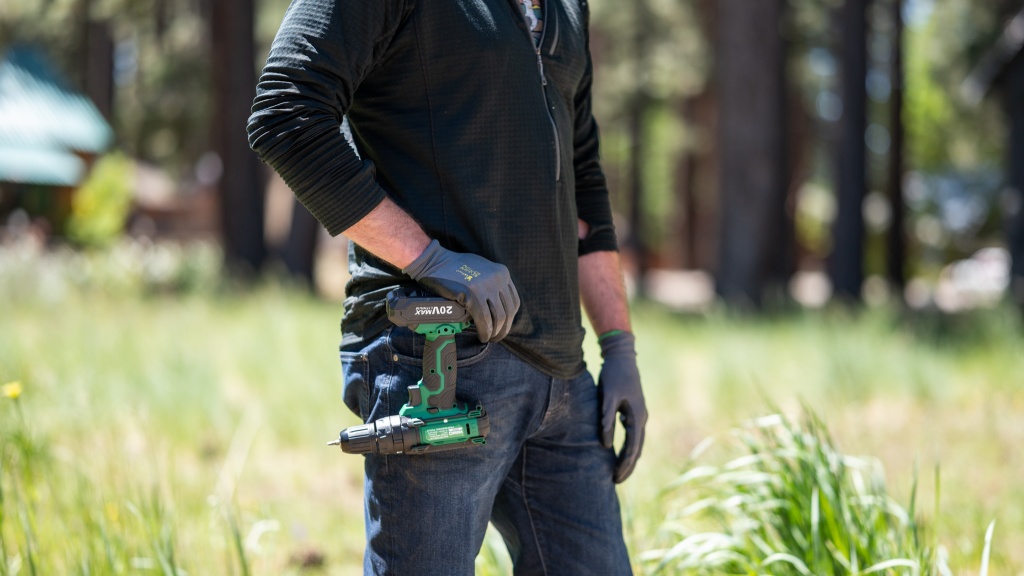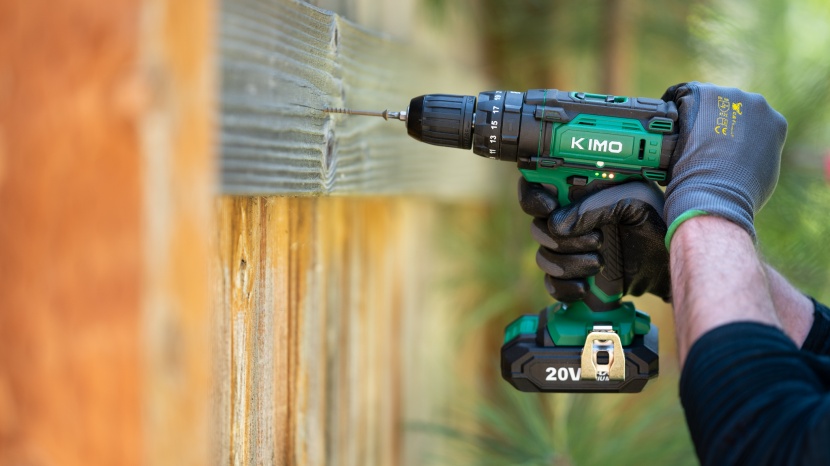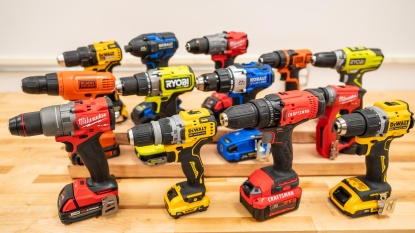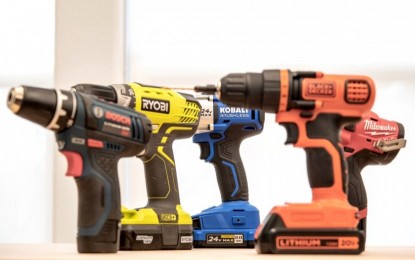KIMO 20V 13809S Review

Our Verdict
Our Analysis and Test Results
The KIMO includes a flexible attachment so you can tighten or loosen fasteners in confined or other hard-to-reach places where the body of the drill is too large — a bit of a unique feature. However, these can break if you apply too much force through them and make it much easier to strip out fasteners, so you only want to use it whenever absolutely necessary.
Drilling
Regrettably, the KIMO can't really hang with the top tools. Showing ok, but not top-tier drilling performance, it's not a tool you'd want to use for heavy or fast work.
It actually got off to a decent start in our steel sheet drilling tests. It was quick and easy to drill through 16-gauge steel sheets when in the lower gear — but it kept stalling when we tried in the higher gear. It only took about 1.5 seconds to punch through the steel sheet with the ¼" drill and around 10 seconds with the ½" drill.
Unfortunately, the KIMO did considerably worse with both the hole saw. It didn't make any progress in its higher gear, but we eventually were able to drill about 4" into a solid-core door (with some persuasion). It frequently stalled and struggled the whole time, taking 2+ minutes to reach this depth. For comparison, the most powerful drills made it a full 5" in under 20 seconds.
This drill did a little better with a 1" spade bit, but not by much. We again had to shift to the lower gear, but it could successfully drill through stacked lumber, though much slower than the top tools.
It would stall on a semi-frequent basis, especially when punching through the bottom of the hole. Overall, we think this drill is fine for the occasional heavy-duty application but we would suggest investing in a more powerful option if you routinely are using large paddle bits or hole saws.
Driving
The KIMO did a little bit better overall when driving fasteners, but still merited a score that was well below average compared to the top tools.
The KIMO delivered very poor results in our 1/2" lag screw test, failing to even come close to driving the 5" screw to the full depth. It stopped with just over 2" of the screw remaining.
This drill did much better with the smaller screws, as long as you weren't trying to drive them in where there was a knot. It's slow and steady when it comes to driving in the screws but can usually get the job done.
The KIMO could countersink the heads to the proper depth most of the time, though it would struggle while doing so.
Included Battery
The KIMO only includes a single 2.0 amp-hour battery, which took around 75 minutes to fully recharge in our test—right on par with the average product.
This drill delivered an average showing in our battery test before calling it quits. It made it through 6 complete cycles and then died just a single 1" hole shy of completing the 7th. The top tools finished over 10 cycles before their batteries were exhausted.
Convenience
Here, the KIMO finished out with decent performance. This drill is fairly lightweight, tipping the scales at just under 3 pounds, and has a belt clip near its battery pack. It can hold a bit up to ⅜" in diameter — which is a little on the smaller side — and it has two different operating modes if you need to maximize speed or torque.
We liked that the battery slides in and out very smoothly and that it has a fuel gauge with LED lights but we weren't overly enamored with the integrated worklight. It's a little on the dim side and there isn't any way to activate the light without the drill spinning.
Value
All in all, the KIMO is a solid tool for its price point. There are definitely much better options out there but we think it's a decent value if you are shopping on a very restricted budget.
Conclusion
This light-duty cordless drill is a great option for beginners or homeowners that are looking for a basic tool that does an acceptable job without spending a ton of cash. It's by no means the most powerful tool out there but it can handle most beginner to intermediate DIY projects without a fuss and includes enough bits and drills to get you started. It's a good option on a tight budget but we would recommend upgrading if you have more ambitious uses in mind.


